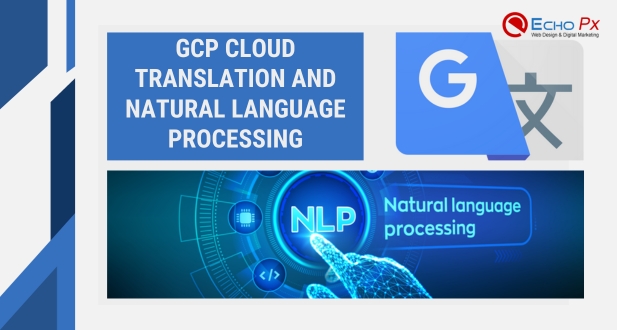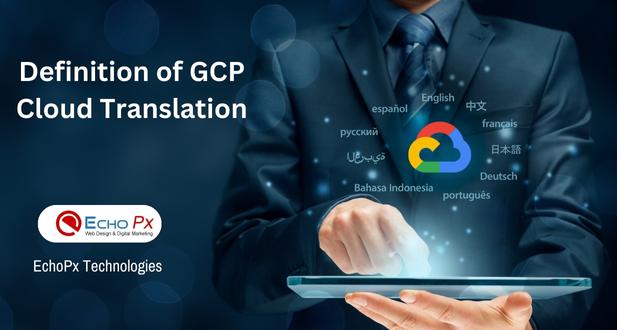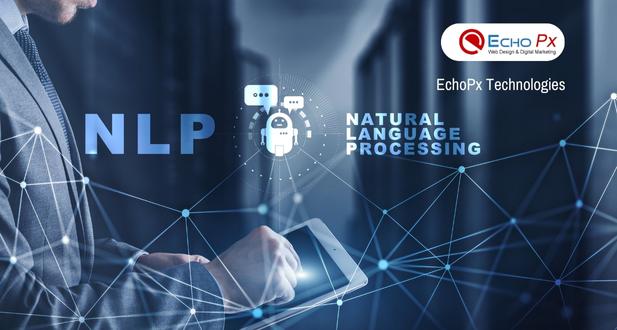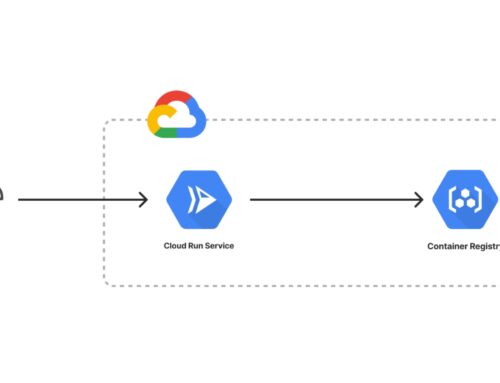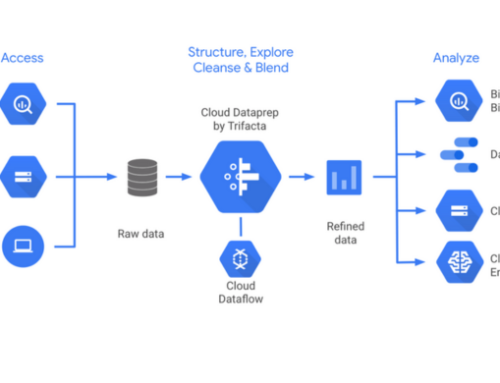Introduction to GCP Cloud Translation and Natural Language Processing
In today’s interconnected global landscape, effective communication across languages is paramount for businesses aiming to reach diverse audiences. Google Cloud Platform’s (GCP) Cloud Translation service stands at the forefront of breaking language barriers. Offering a comprehensive suite of tools, Cloud Translation empowers organizations to seamlessly translate text from one language to another, facilitating international collaboration and broadening the reach of digital content.
Definition of GCP Cloud Translation
GCP Cloud Translation is a robust and versatile service designed to translate text content effortlessly. Leveraging advanced machine learning models, it supports a multitude of languages, enabling businesses to provide content in the native languages of their audience. From websites and applications to documents and multimedia, Cloud Translation ensures that the richness of information is not lost in translation.
Introduction to Natural Language Processing (NLP)
Natural Language Processing (NLP) is the key to unlocking the deeper nuances of human language. It involves the utilization of computational methods to comprehend, interpret, and generate human-like language. In the context of GCP, NLP complements Cloud Translation by adding a layer of semantic understanding. This means going beyond word-for-word translations and grasping the contextual intricacies of language, including sentiment, entities, and relationships.
NLP is instrumental in transforming raw text data into actionable insights. By incorporating NLP into the translation process, Cloud Translation becomes more than just a linguistic bridge—it becomes a tool for true language understanding. This integration allows businesses to not only convey information accurately but also to comprehend the underlying meaning, leading to more effective and context-aware communication.
In the sections that follow, we will delve deeper into the capabilities of GCP Cloud Translation and the transformative role of NLP in enhancing language processing. From real-world applications to advanced features, security considerations, and future trends, this exploration aims to provide a comprehensive understanding of the dynamic synergy between Cloud Translation and NLP.
GCP Cloud Translation: Bridging Language Gaps
Core Features of GCP Cloud Translation
GCP Cloud Translation stands out for its comprehensive set of features that make language translation not just accurate but also highly adaptable to diverse use cases.
Support for a Wide Range of Languages: One of the fundamental strengths of Cloud Translation is its extensive language support. From widely spoken languages to those with more limited usage, the service accommodates a broad spectrum, ensuring that businesses can cater to a global audience with ease.
Multi-Language Translation Capabilities: Cloud Translation excels in handling translations across multiple languages simultaneously. This capability is particularly beneficial for organizations with diverse linguistic requirements, allowing them to manage content in various languages seamlessly.
Integration with GCP Ecosystem: Cloud Translation seamlessly integrates with the broader GCP ecosystem. This integration enables users to incorporate translation capabilities into their existing workflows, whether it’s translating content stored in Cloud Storage, processing data in BigQuery, or enhancing the multilingual capabilities of applications deployed on Google Kubernetes Engine (GKE). The synergy between Cloud Translation and other GCP services contributes to a cohesive and efficient language processing infrastructure.
GCP Cloud Translation and Natural Language Processing
Enabling Cross-Border Communication in Business: Cloud Translation plays a pivotal role in breaking down language barriers for businesses engaged in international collaborations. Whether it’s communicating with clients, partners, or employees across different regions, Cloud Translation ensures that the exchange of information is smooth and language-neutral.
Streamlining Content Localization for Global Audiences: Content localization is a critical aspect of reaching a global audience. Cloud Translation simplifies this process by providing a reliable mechanism for translating website content, application interfaces, marketing materials, and other digital assets. This ensures that the essence of the content remains intact, irrespective of the language it’s translated into.
Enhancing User Experience through Multilingual Support: In the digital age, user experience is a key differentiator. Cloud Translation enables businesses to enhance user experience by offering multilingual support in applications and online platforms. Users from different linguistic backgrounds can engage with the platform in their preferred language, fostering inclusivity and expanding the platform’s user base.
As we move forward, we will explore how Cloud Translation goes beyond these fundamental features, incorporating natural language processing to elevate translation to a deeper level of understanding and contextual relevance.
Natural Language Processing Essentials
Understanding the Basics of NLP
NLP Basics Unveiled: Natural Language Processing (NLP) is a branch of artificial intelligence (AI) that focuses on the interaction between computers and human languages. At its core, NLP involves a series of techniques and processes to enable machines to comprehend, interpret, and generate human-like language. Some fundamental aspects of NLP include:
Tokenization, Parsing, and Semantic Analysis: Tokenization involves breaking down text into individual units or tokens, which could be words or phrases. Parsing delves into the grammatical structure of sentences, analyzing how words relate to each other. Semantic analysis goes a step further by understanding the meaning behind words and their contextual relevance in a given sentence.
Sentiment Analysis and Entity Recognition: Sentiment analysis is a key application of NLP, involving the determination of the emotional tone conveyed in a piece of text. This is particularly valuable in gauging customer sentiments in reviews, social media, and other textual data. Entity recognition focuses on identifying and categorizing entities, such as names of people, organizations, locations, and more, within the text.
Role of NLP in Data Insights
NLP as a Powerful Analytical Tool: Beyond its linguistic applications, NLP plays a crucial role in extracting valuable insights from unstructured data. Unstructured data, which constitutes a significant portion of the information available, includes text data in the form of articles, reviews, social media posts, and more. NLP techniques can unravel meaningful patterns and information from this seemingly chaotic data.
Leveraging NLP for Sentiment Analysis in Customer Feedback: Understanding customer sentiments is vital for businesses aiming to enhance their products and services. NLP comes into play by automating the sentiment analysis process, providing businesses with a systematic way to gauge customer feedback. This enables companies to respond promptly to issues, identify areas for improvement, and maintain a positive customer experience.
As we delve deeper into GCP Cloud Translation and its integration with NLP, we’ll explore how these technologies synergize to bring about a new era in language understanding and communication.
Integration of Cloud Translation and NLP for Comprehensive Language Understanding
How Cloud Translation Utilizes NLP
Behind-the-Scenes Harmony: The marriage of Google Cloud Translation and Natural Language Processing (NLP) goes beyond mere translation; it’s about fostering a deeper understanding of language. When you input a text for translation, Cloud Translation leverages NLP techniques behind the scenes to enhance the accuracy and nuance of the translated content. Here’s a glimpse into how this integration unfolds:
Leveraging NLP Processes in Translation: As the text undergoes translation, NLP processes come into play. Tokenization aids in breaking down sentences into meaningful units, ensuring a nuanced translation that captures the intended meaning. Parsing contributes to understanding the grammatical structure, allowing for syntactically sound translations. Semantic analysis adds an extra layer by deciphering the contextual nuances, ensuring that the translated output not only mirrors the literal words but also conveys the intended message accurately.
Enhancing Translation Accuracy: NLP acts as a linguistic companion, guiding Cloud Translation to navigate the intricacies of language. This includes recognizing idiomatic expressions, handling linguistic nuances, and ensuring cultural relevance. The result is a translation that doesn’t just swap words from one language to another but comprehends the essence of the message, delivering a more accurate and contextually relevant outcome.
Real-world Examples
Analyzing Translated Content for Sentiment: Beyond the literal translation of words, the integration of Cloud Translation and NLP allows for a deeper analysis of sentiment within translated content. Suppose a company receives customer feedback in various languages. By running this feedback through Cloud Translation integrated with sentiment analysis from NLP, the company can gain insights into the emotional tone of customer sentiments across different regions. This capability is invaluable for global businesses aiming to address customer concerns effectively.
Extracting Entities from Translated Text: In a multilingual landscape, entities such as names of individuals, organizations, or locations may vary significantly. Cloud Translation, coupled with NLP’s entity recognition capabilities, ensures that these entities are accurately extracted and understood. For instance, if a global business is analyzing reviews from different language sources, the integrated system can identify and categorize entities mentioned in these reviews, providing a consolidated view of the most discussed aspects.
As we explore the integration of Cloud Translation and NLP, it becomes evident that this synergy not only enables accurate language translation but also opens doors to a profound understanding of the intricacies of human communication across diverse linguistic landscapes.
Advanced Features of GCP Cloud Translation and NLP
Customization and Domain-specific Translation
Tailoring Translations for Industry-specific Jargon: One of the standout features of GCP Cloud Translation is its ability to cater to industry-specific language nuances. Through customization, businesses can train the translation model to understand and replicate specialized jargon used in their particular domain. This is particularly beneficial for sectors such as legal, healthcare, or technology, where precision in language is paramount. Customizing the translation model ensures that the output aligns with the industry’s specific terminology, providing more accurate and contextually relevant translations.
Utilizing Custom Dictionaries for Accurate Translations: GCP Cloud Translation allows the incorporation of custom dictionaries, a powerful tool for ensuring the accuracy of translations. Businesses can input industry-specific terms, brand names, or technical vocabulary unique to their operations. The translation model, when equipped with such a custom dictionary, gains a heightened understanding of the specialized terminology, significantly improving the precision and relevance of translations. This feature is particularly valuable in scenarios where standard translation models might struggle to capture the nuances of specialized vocabulary.
Sentiment Analysis for Business Insights
How Sentiment Analysis Contributes to Decision-making: Sentiment analysis, an integral part of NLP, plays a pivotal role in understanding the emotional tone behind the words. In the context of GCP Cloud Translation, this feature extends beyond mere language comprehension; it empowers businesses with valuable insights. By gauging the sentiment expressed in translated content, organizations can derive actionable insights that inform decision-making. For example, analyzing customer reviews translated into different languages can unveil sentiments towards products or services, guiding businesses in refining their strategies to align with customer expectations.
Extracting Actionable Insights from Sentiment Data: The integration of sentiment analysis with GCP Cloud Translation enables businesses to go beyond surface-level comprehension. By extracting actionable insights from sentiment data, organizations can identify trends, address pain points, and capitalize on positive sentiments. This not only enhances customer relations but also informs broader business strategies. The ability to comprehend the emotional nuances in translated content positions businesses to respond effectively to the sentiments expressed by diverse global audiences.
Entity Recognition for Information Extraction
Identifying Entities in Translated Text: Entity recognition in NLP refers to the process of identifying and categorizing entities, such as names of individuals, organizations, locations, or specific terms, within a given text. In the context of GCP Cloud Translation, integrating entity recognition enriches the translated content by highlighting key entities. This feature ensures that important information is not lost in translation, allowing businesses to extract meaningful insights from the translated text.
Applications in Information Retrieval and Knowledge Extraction: Entity recognition has diverse applications, particularly in scenarios where information retrieval and knowledge extraction are crucial. For instance, in a multinational corporation analyzing translated financial reports, entity recognition can automatically identify and categorize crucial information like company names, financial figures, and key personnel. This not only streamlines the process of extracting relevant data but also enhances the efficiency of decision-makers relying on translated content.
As we delve into the advanced features of GCP Cloud Translation and NLP, it becomes evident that the integration of customization, sentiment analysis, and entity recognition significantly elevates the capabilities of language understanding and translation, making it a versatile tool for businesses operating in diverse linguistic landscapes.
Challenges and Solutions in Cloud Translation and NLP
Handling Ambiguity in Language
Addressing Challenges with Ambiguous Phrases: Language, by its nature, can be rich in ambiguity, with phrases that may carry multiple meanings. One of the challenges faced in Cloud Translation and NLP is disambiguating such expressions to provide accurate and contextually appropriate translations. Techniques such as context-aware translation models, which take into account the surrounding text to infer the intended meaning, play a vital role in mitigating ambiguity. Additionally, the use of machine learning algorithms that analyze patterns and context helps in deciphering the correct interpretation of ambiguous phrases.
Techniques for Improving Translation and NLP Accuracy: Continuous advancements in machine learning algorithms contribute to the improvement of translation and NLP accuracy, addressing the challenge of ambiguity. Google Cloud Translation leverages neural machine translation (NMT), a deep learning approach, which excels in capturing contextual nuances and reducing ambiguity. Additionally, ongoing research in natural language understanding focuses on developing models that better grasp the intricacies of language, enhancing accuracy in handling ambiguous expressions.
Ethical Considerations in NLP
Addressing Bias and Fairness in Language Processing: Ethical considerations are paramount in the development and deployment of NLP models. One significant challenge is the potential introduction of bias in language processing, leading to unfair or skewed outcomes. Efforts to address bias involve rigorous testing of models with diverse datasets, ensuring representation from various demographics and linguistic backgrounds. Implementing fairness-aware algorithms and adopting inclusive practices in dataset curation contribute to minimizing bias and promoting fair language processing.
Ensuring Responsible AI Practices in Translation and NLP: Responsible AI practices are crucial to uphold ethical standards in translation and NLP. Google Cloud Translation places a strong emphasis on transparency and provides users with visibility into model performance. Implementing explainability features allows users to understand how the model arrives at certain translations, fostering accountability. Additionally, ongoing efforts in the AI community involve developing guidelines and frameworks for responsible AI, ensuring that NLP models are designed and used ethically.
As the fields of Cloud Translation and NLP progress, addressing challenges such as handling ambiguity and ensuring ethical considerations becomes essential. The continuous refinement of algorithms, integration of advanced techniques, and commitment to responsible AI practices contribute to overcoming these challenges and enhancing the reliability of language processing systems.
Use Cases Across Industries
Healthcare
Translating Medical Records for Global Collaboration: In the healthcare sector, where collaboration on a global scale is increasingly common, Cloud Translation and NLP play a vital role. The translation of medical records enables seamless communication among healthcare professionals worldwide. NLP, in this context, facilitates the extraction of valuable insights from clinical notes, supporting medical research and enhancing patient care through a comprehensive understanding of medical information.
E-commerce
Localizing Product Information for Diverse Markets: E-commerce relies heavily on effective communication with a global audience. Cloud Translation assists in localizing product information, ensuring that product details are accurately presented in multiple languages. Additionally, NLP comes into play by analyzing customer sentiments expressed in reviews and feedback. This analysis provides valuable insights for product improvement and customer satisfaction strategies, contributing to a more tailored and effective e-commerce experience.
Legal and Compliance
Translating Legal Documents for Cross-Border Legal Cases: In the legal and compliance domain, where precision in language is critical, Cloud Translation facilitates the translation of legal documents for cross-border legal cases. NLP enhances this process by aiding in the analysis of complex legal texts, extracting relevant information, and ensuring a nuanced understanding of legal content across languages.
NLP in Contract Analysis and Compliance Monitoring: NLP also proves beneficial in contract analysis and compliance monitoring within the legal sector. It can quickly analyze vast volumes of legal documents, identifying key clauses and potential compliance issues. This not only expedites the contract review process but also ensures that organizations adhere to legal and regulatory requirements, mitigating risks associated with non-compliance.
Security and Compliance Considerations
Ensuring Data Privacy in Translation and NLP
Encryption and Secure Data Handling Practices: Security is paramount when dealing with sensitive information, especially in healthcare, legal, and other industries. Cloud Translation and NLP services prioritize data privacy through robust encryption mechanisms. By encrypting data both in transit and at rest, these services ensure that translated content and processed information remain confidential and secure. This approach aligns with industry best practices for safeguarding sensitive data during language-related processes.
Compliance with Data Protection Regulations: Given the global nature of data processing, compliance with data protection regulations is crucial. Cloud Translation and NLP services are designed to adhere to international data protection standards. Organizations leveraging these services can trust that their language-related data processing aligns with regulations such as GDPR, HIPAA, and other regional data protection laws. This commitment to compliance ensures that organizations can confidently integrate these technologies into their workflows without compromising data privacy.
Industry Standards for NLP
GCP’s Adherence to NLP-related Industry Standards: Google Cloud Platform (GCP) is committed to maintaining the highest standards in natural language processing. This includes adhering to industry standards and best practices in NLP. By aligning with established standards, GCP provides users with a framework that ensures the ethical and responsible use of NLP technologies. This commitment not only enhances the trustworthiness of Cloud Translation and NLP services but also contributes to the establishment of industry-wide norms for responsible language processing.
Meeting Legal and Regulatory Requirements in Language Processing: Legal and regulatory frameworks around language processing are dynamic and can vary across industries and regions. Cloud Translation and NLP services on GCP are designed to meet these evolving requirements. This adaptability ensures that organizations relying on these services can navigate the complex landscape of legal and regulatory compliance in language-related tasks. GCP’s commitment to staying abreast of changes in legal and regulatory landscapes underscores its dedication to providing users with a secure and compliant language processing environment.
The versatility of Cloud Translation and NLP is evident in their application across diverse industries. From fostering global collaboration in healthcare to optimizing e-commerce strategies and ensuring legal precision, these technologies contribute significantly to breaking down language barriers and enhancing operational efficiency
Future Trends in Cloud Translation and NLP
Advancements in Translation Technologies
The Impact of Machine Learning Advancements on Translation: The future of Cloud Translation holds exciting possibilities driven by advancements in machine learning. As machine learning models continue to evolve, translation technologies are poised to become more accurate, context-aware, and capable of handling nuanced language intricacies. This evolution is expected to result in translations that not only convey the literal meaning but also capture the nuances and cultural context of the original text. Enhanced machine learning models will play a pivotal role in making translations more natural and aligned with the intricacies of human communication.
Potential Developments in Language Understanding through NLP: Natural Language Processing (NLP) is on a trajectory of continual innovation, and the future holds promises of more sophisticated language understanding. As NLP models become more adept at comprehending context, sentiment, and user intent, the applications of language understanding will expand. Future developments may include enhanced sentiment analysis, more accurate entity recognition, and a deeper understanding of user queries. This evolution in NLP will contribute to a more intuitive and context-aware interaction between users and language processing systems.
Evolving Industry Needs and NLP Innovations
Adapting to Changing Business Requirements: The future landscape of Cloud Translation and NLP will be shaped by the evolving needs of businesses. As industries become increasingly globalized, there will be a growing demand for translation services that can cater to diverse markets and languages. NLP innovations will need to align with the changing requirements of businesses, offering solutions that go beyond basic language translation to address industry-specific challenges.
Integration of Emerging Technologies with NLP: The intersection of NLP with other emerging technologies, such as augmented reality, virtual assistants, and the Internet of Things (IoT), will open new frontiers. Integration with these technologies will not only enhance the capabilities of Cloud Translation and NLP but also lead to the development of innovative applications. For instance, real-time language translation in augmented reality environments or natural language interaction with IoT devices represents potential areas of integration.
The future trends in Cloud Translation and NLP are dynamic and responsive to the evolving landscape of technology and business requirements. As these technologies continue to mature, they will play a pivotal role in shaping the way we communicate and interact in a globalized digital world.
Conclusion
In conclusion, the integration of Google Cloud Platform’s Cloud Translation and Natural Language Processing (NLP) signifies a pivotal moment in the evolution of language-related technologies. With Cloud Translation, businesses have a robust solution to bridge language gaps and facilitate seamless communication on a global scale. The comprehensive capabilities of NLP further enrich the understanding of language, enabling applications to decipher context, sentiment, and entities within the text.
As we move forward, the collaborative power of Cloud Translation and NLP promises to revolutionize how businesses operate, breaking down linguistic barriers and fostering inclusivity in a diverse and interconnected world. The advancements in machine learning and NLP technologies are set to redefine translation accuracy and language understanding, making interactions more natural and culturally nuanced.
The future trends in Cloud Translation and NLP are not only aligned with the changing needs of businesses but also reflective of the broader technological landscape. As these technologies continue to innovate and integrate with emerging trends like augmented reality and the Internet of Things, they hold the potential to reshape our digital experiences fundamentally.
In essence, the journey of Cloud Translation and NLP is marked by continuous refinement and adaptation, paving the way for a future where language is no longer a barrier but a bridge that spans international borders and unites people, companies, and cultures.The synergistic blend of translation and NLP is a testament to the transformative power of technology in fostering meaningful communication and understanding in an increasingly interconnected world.
